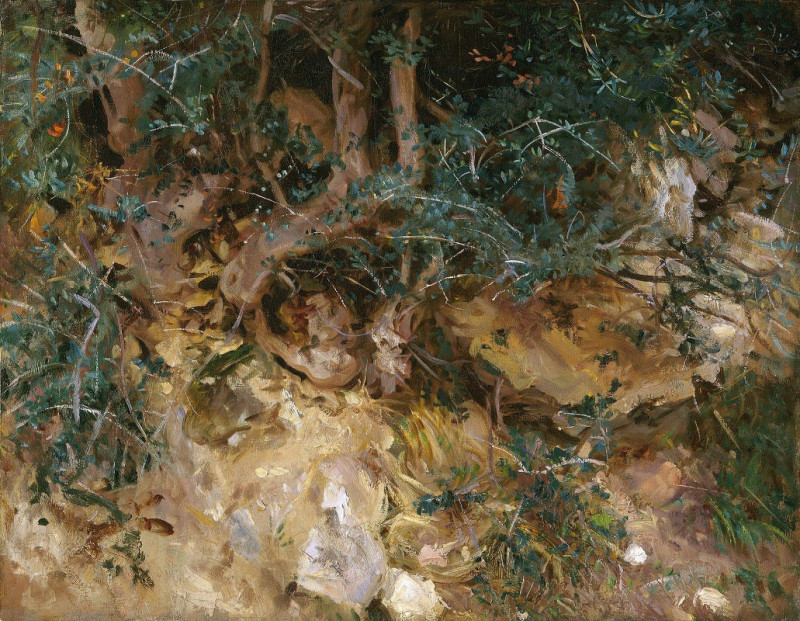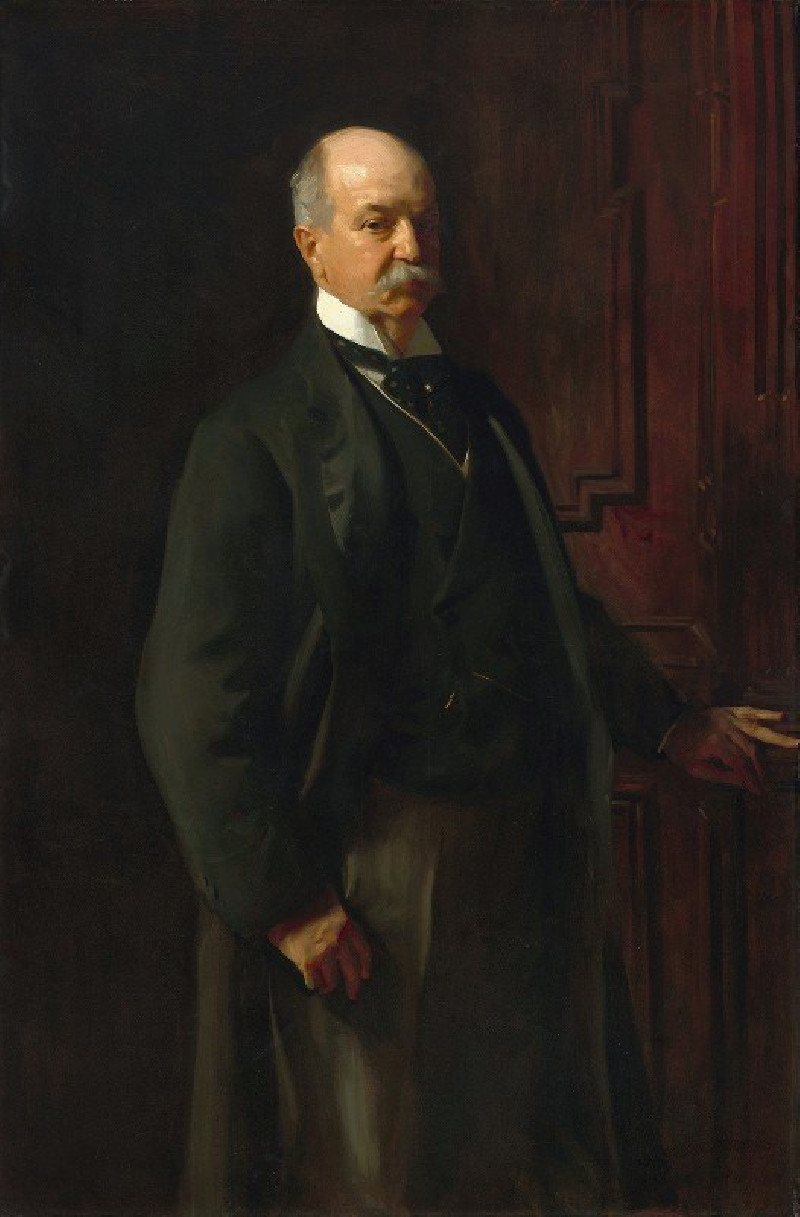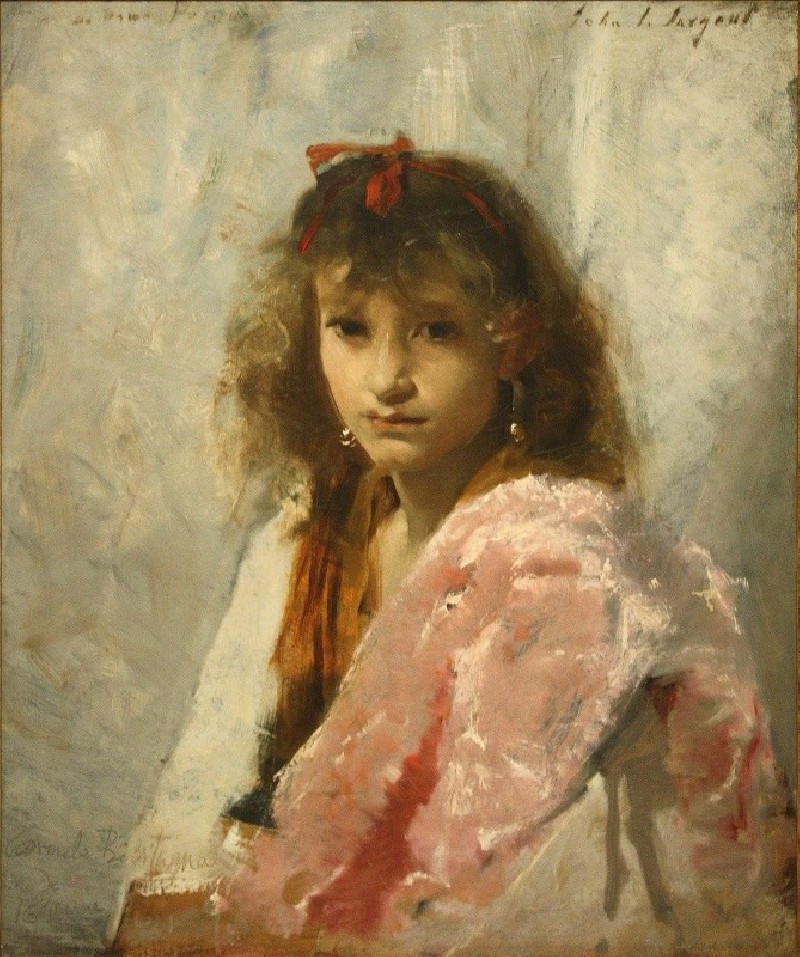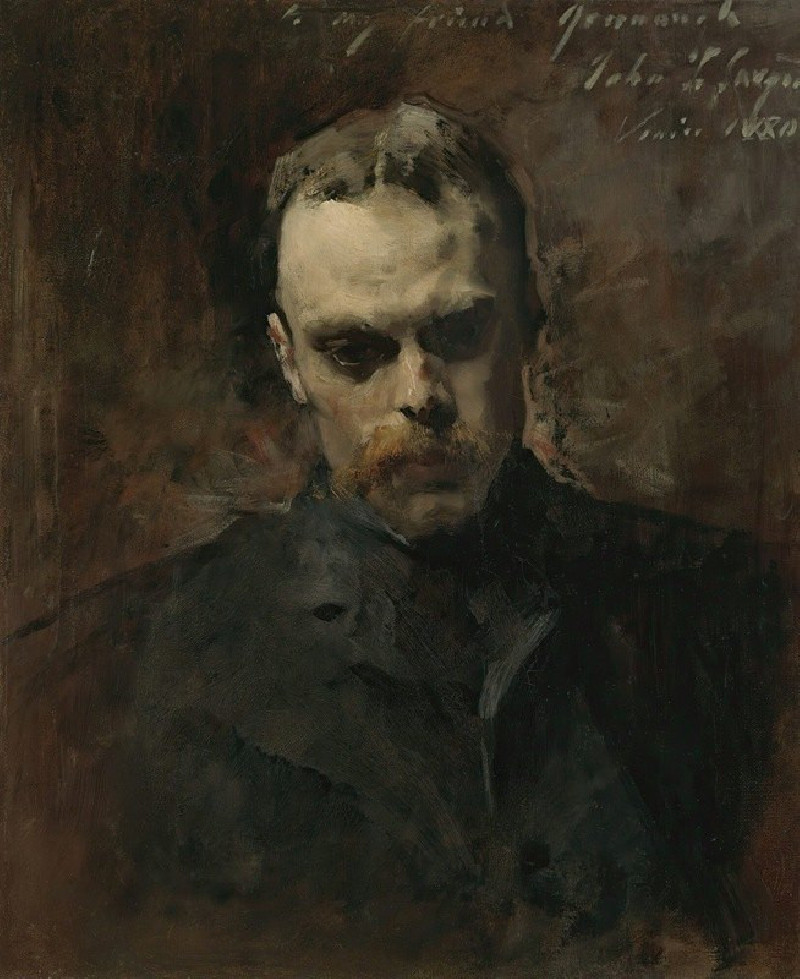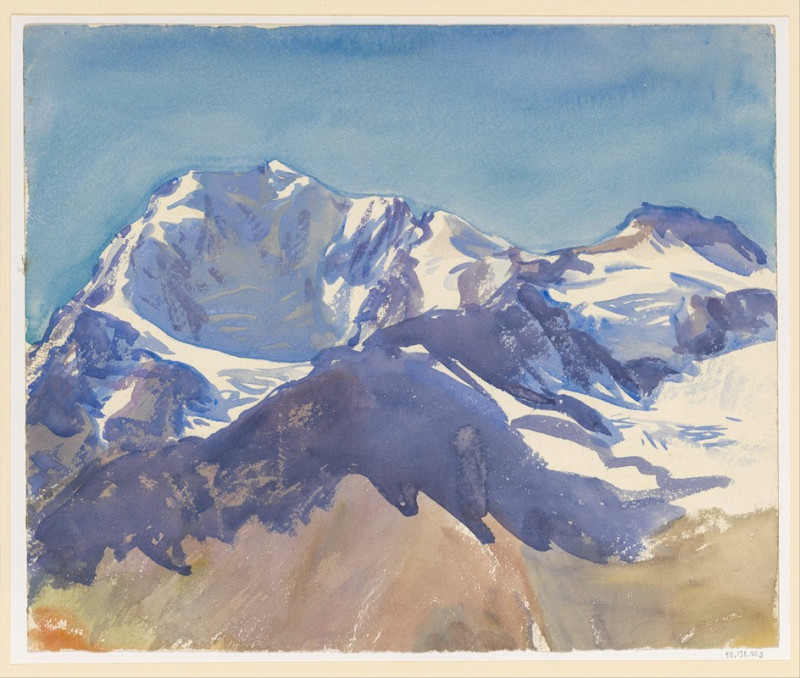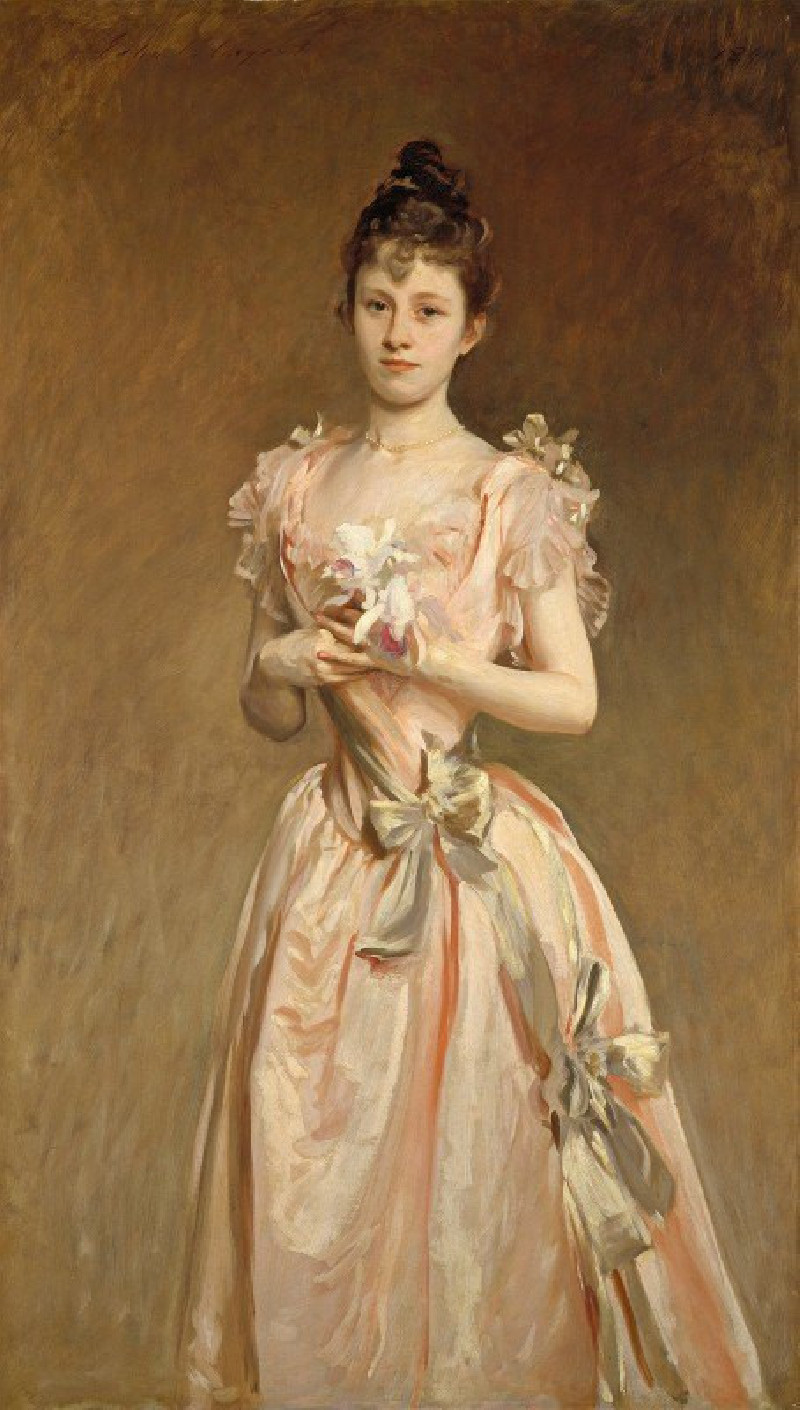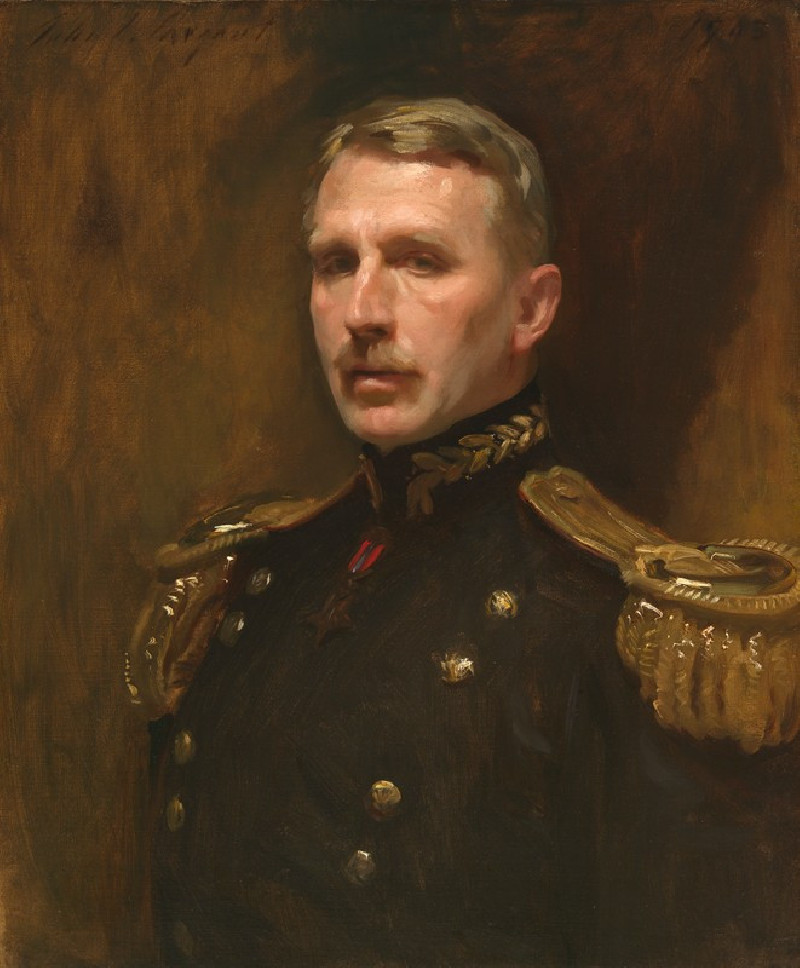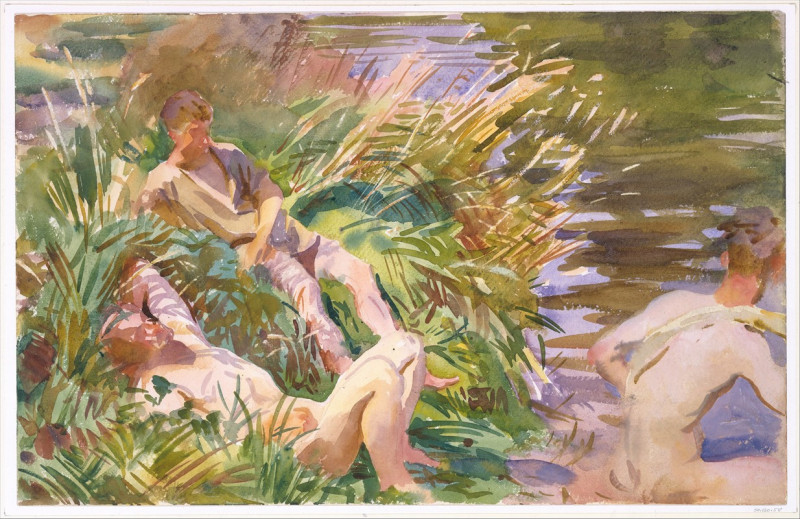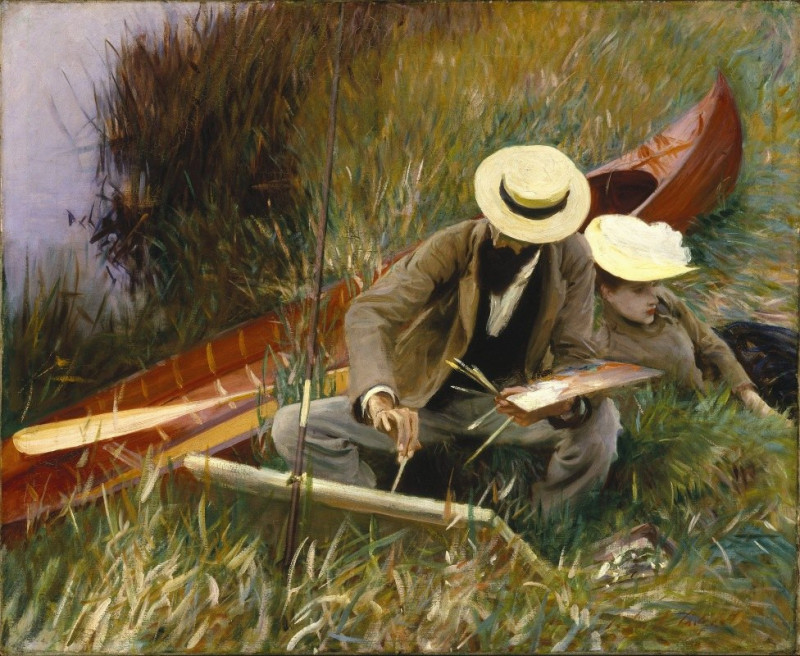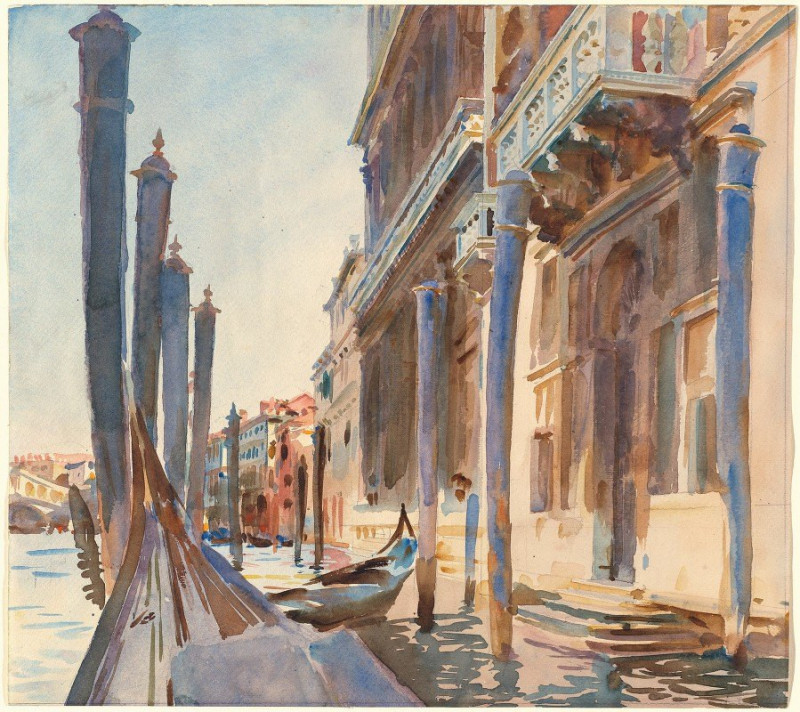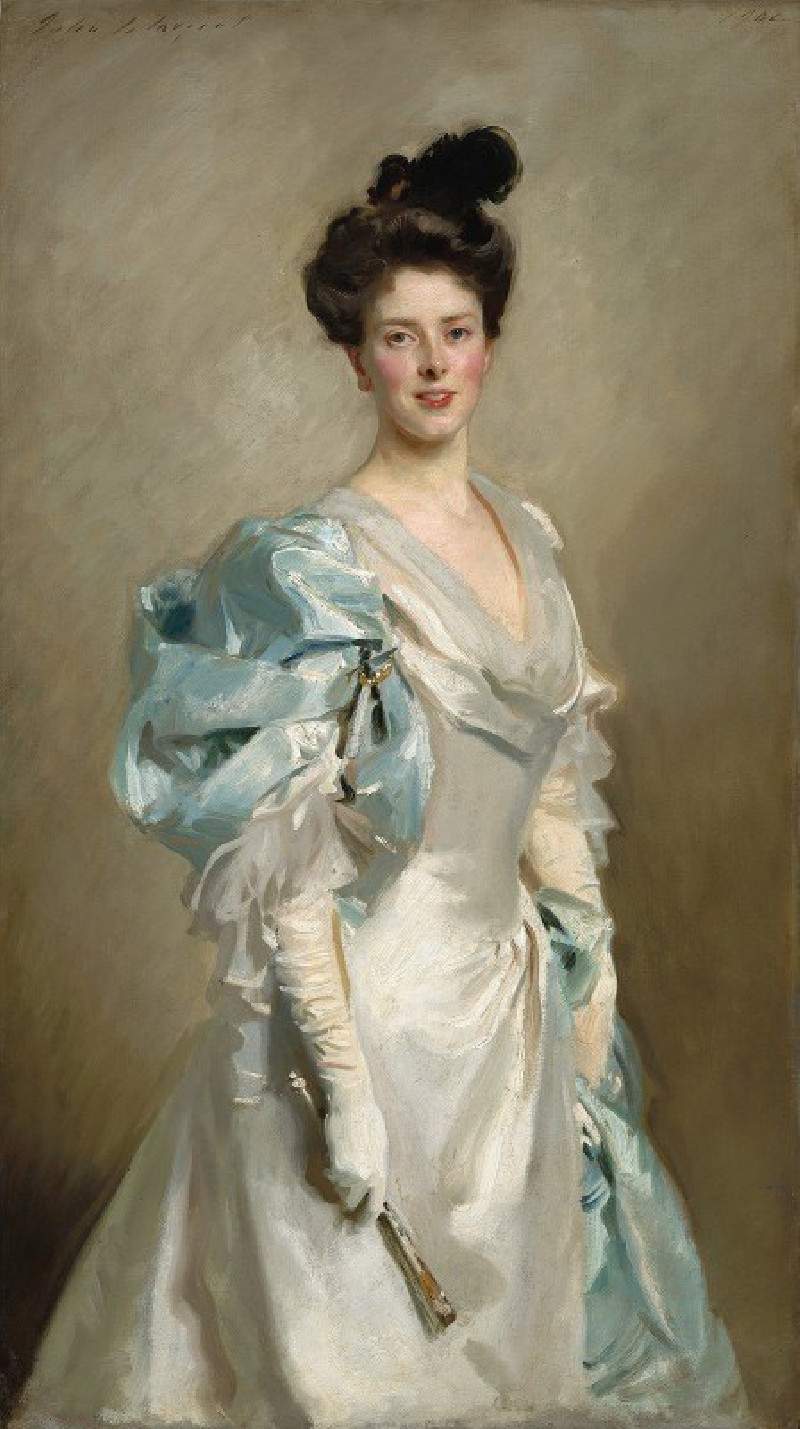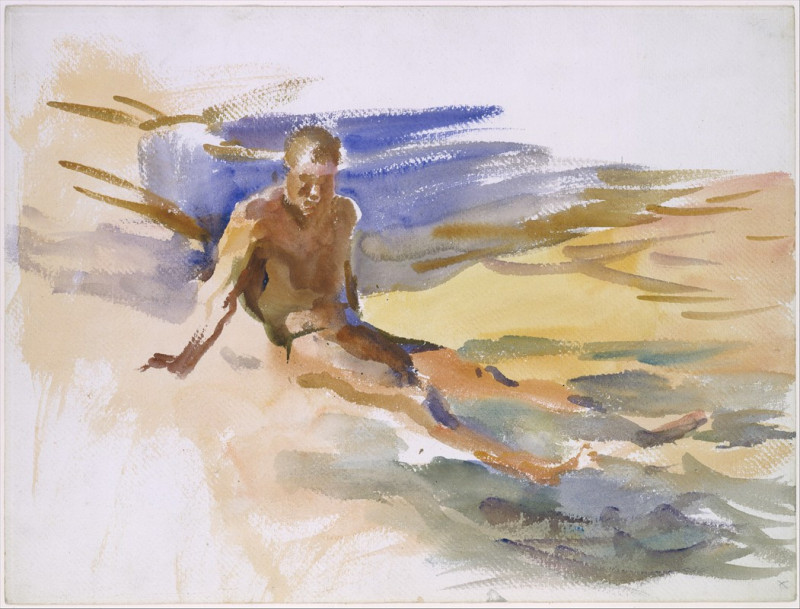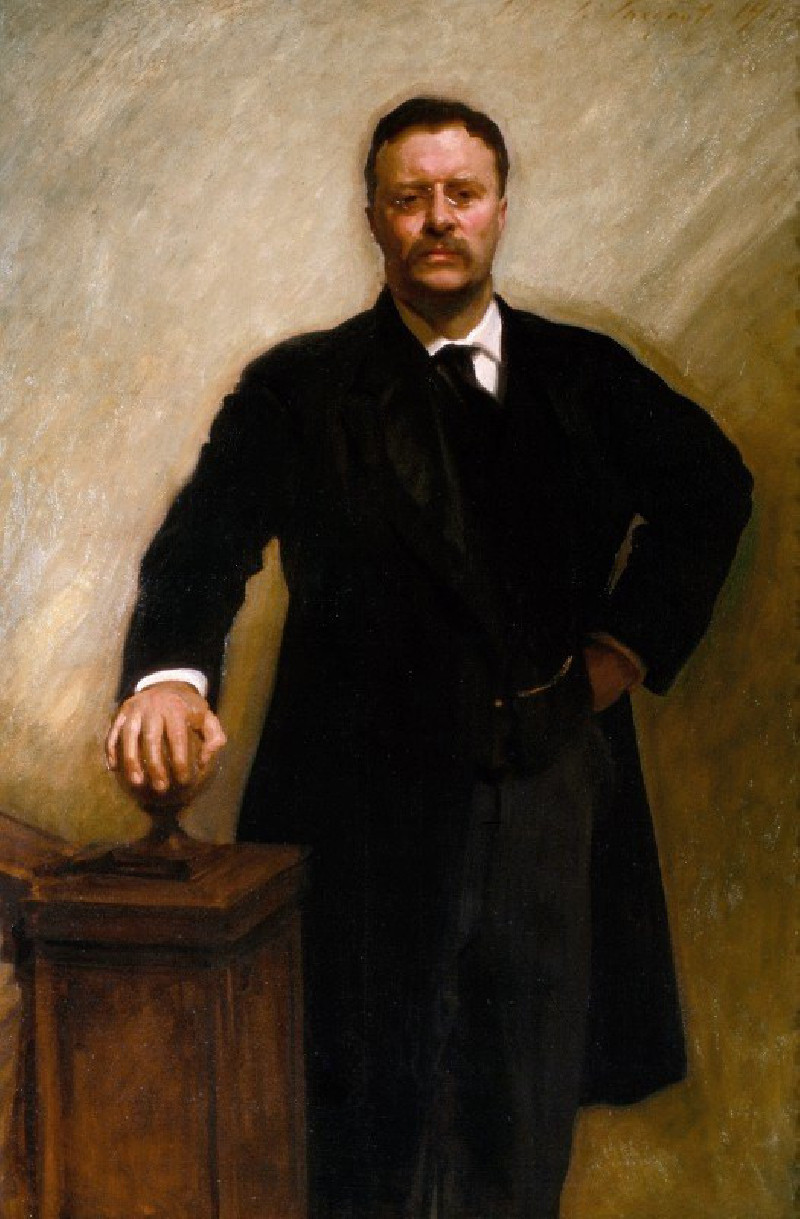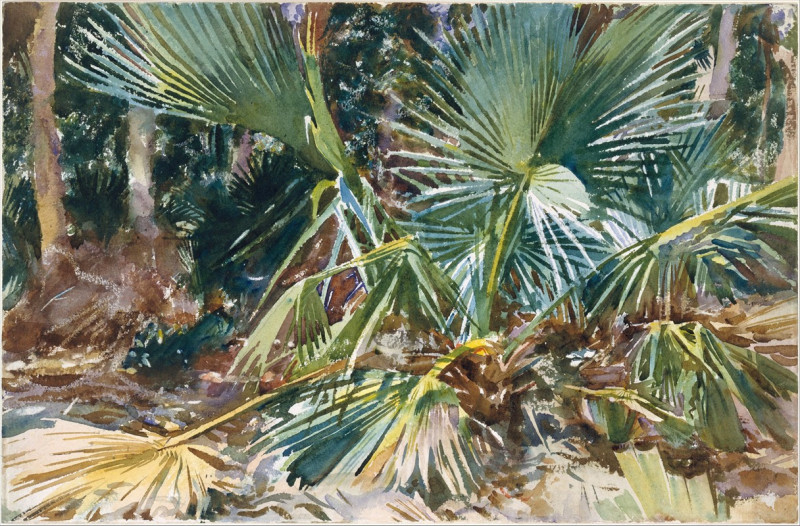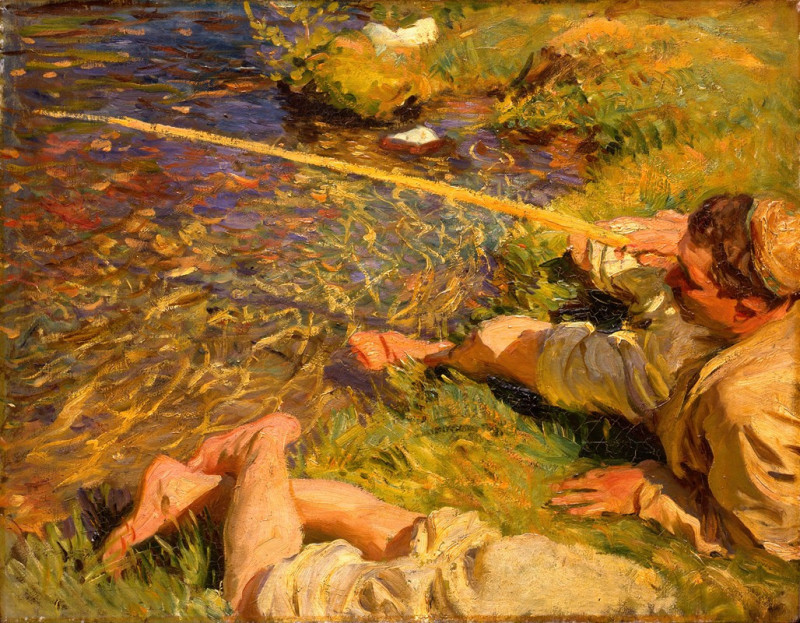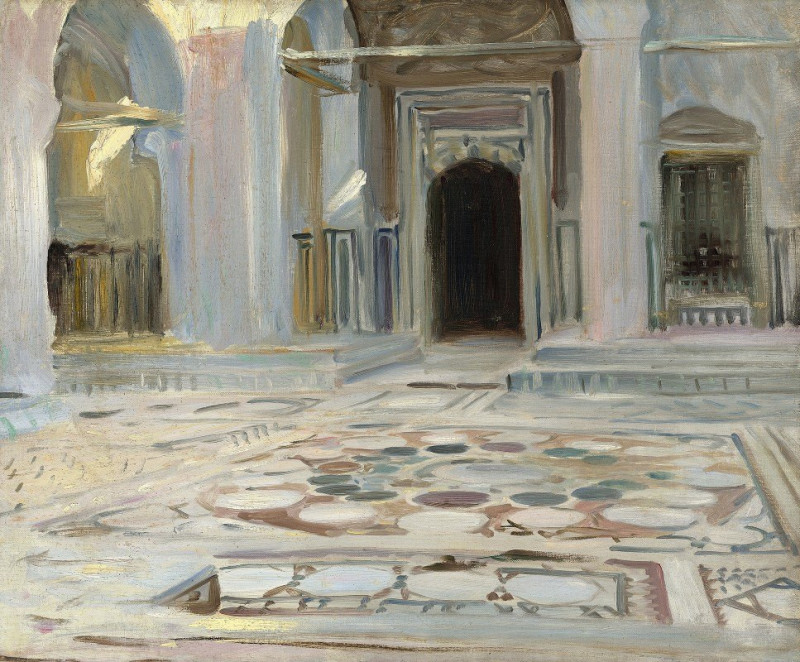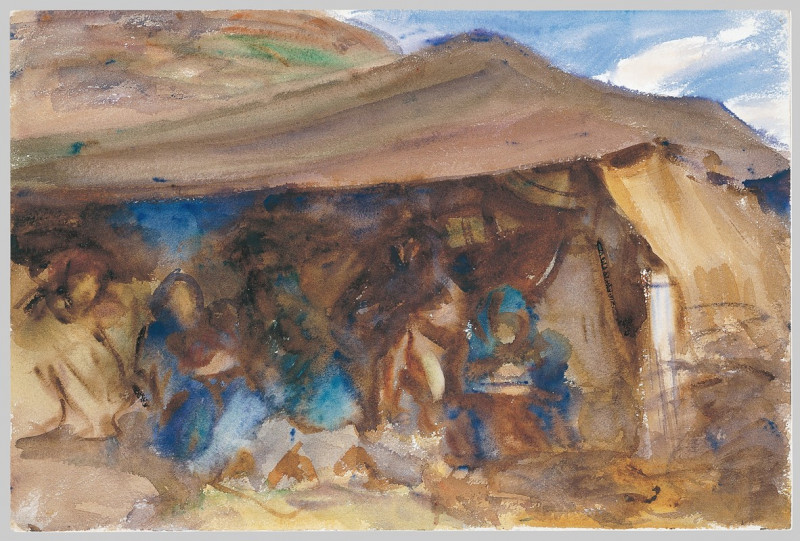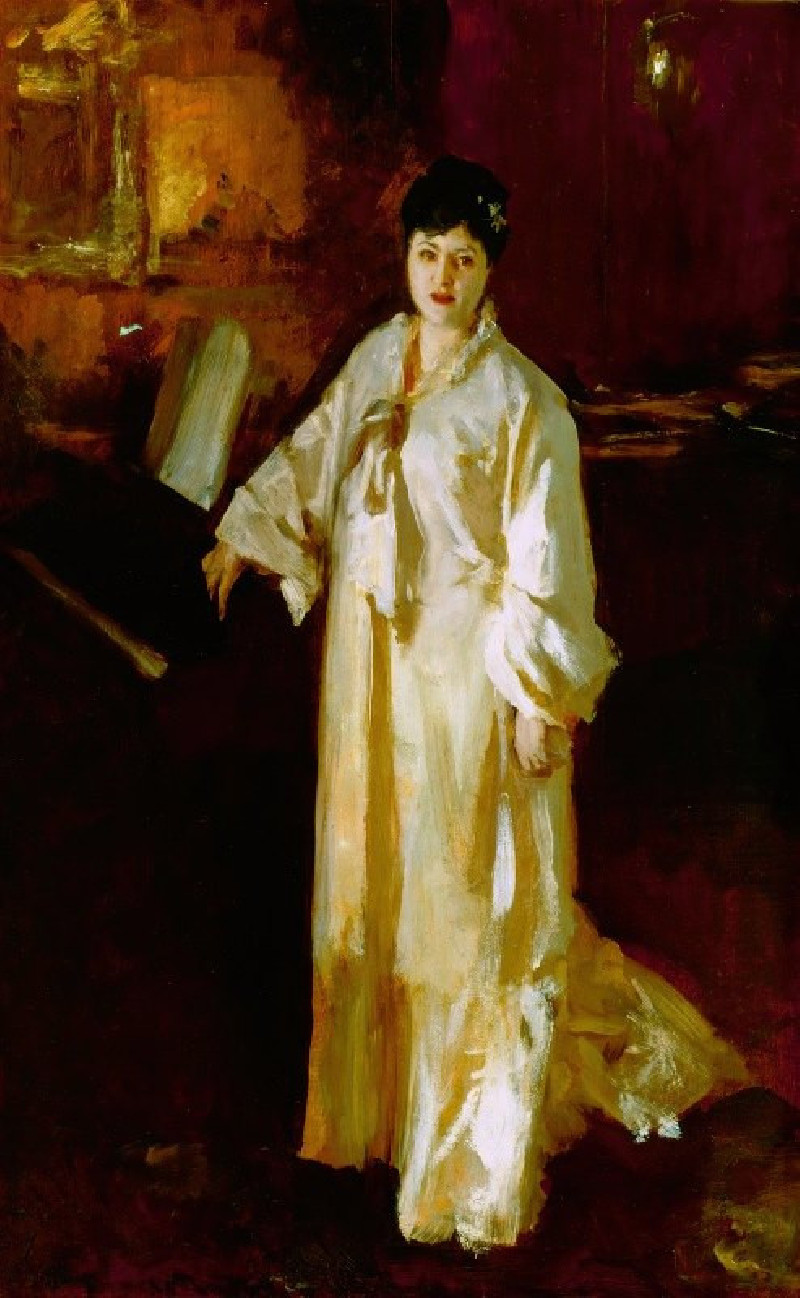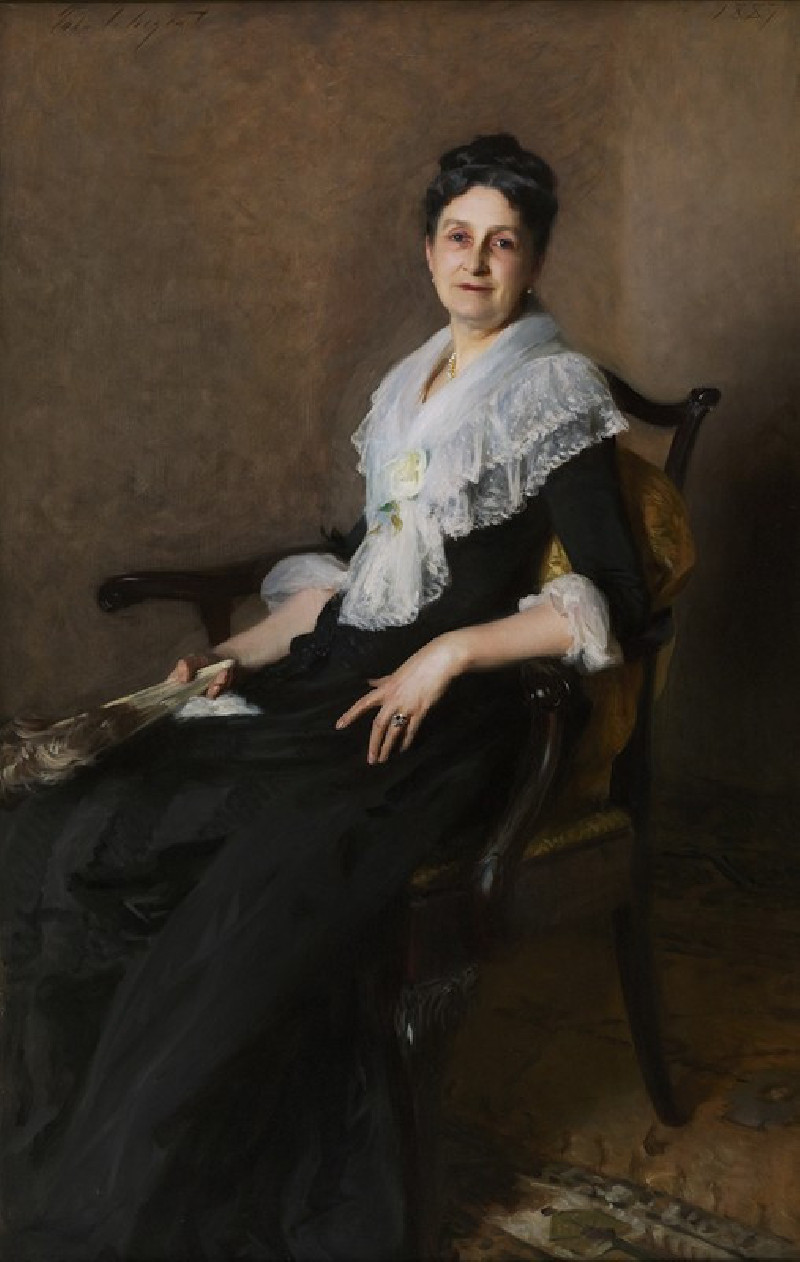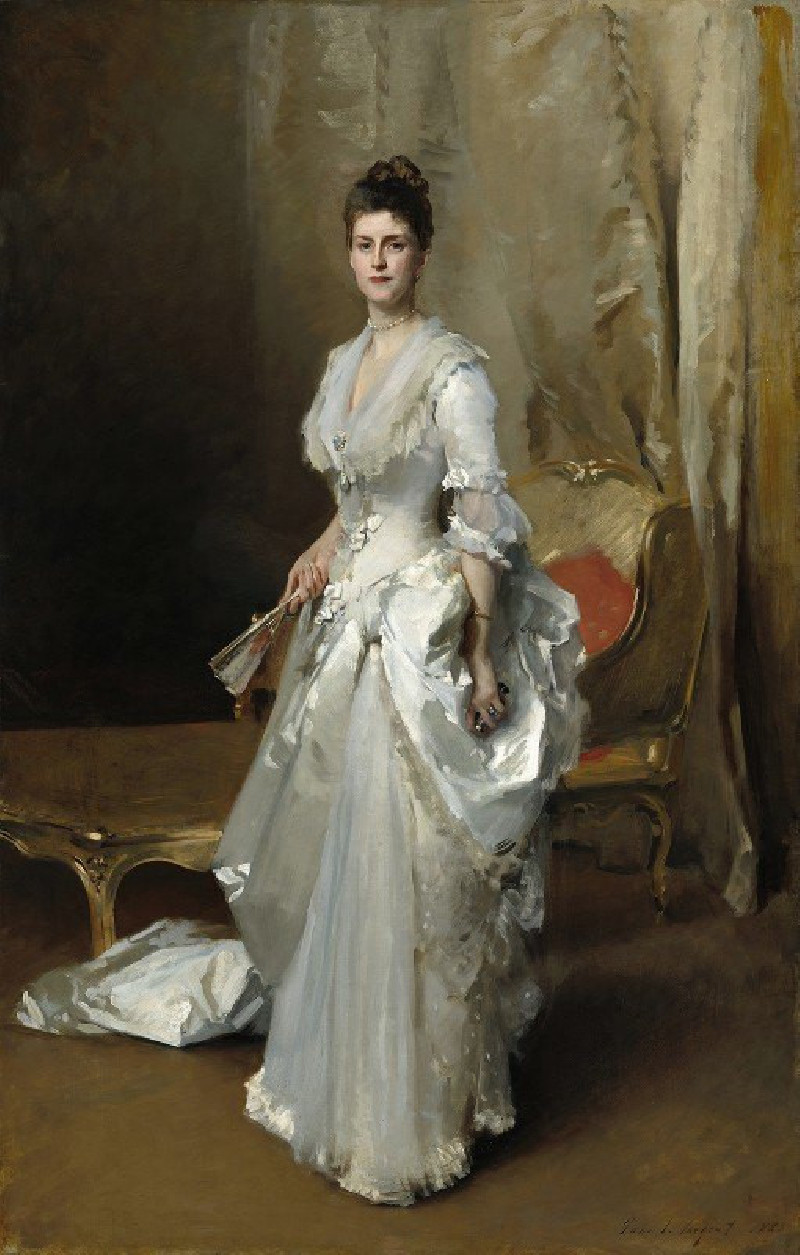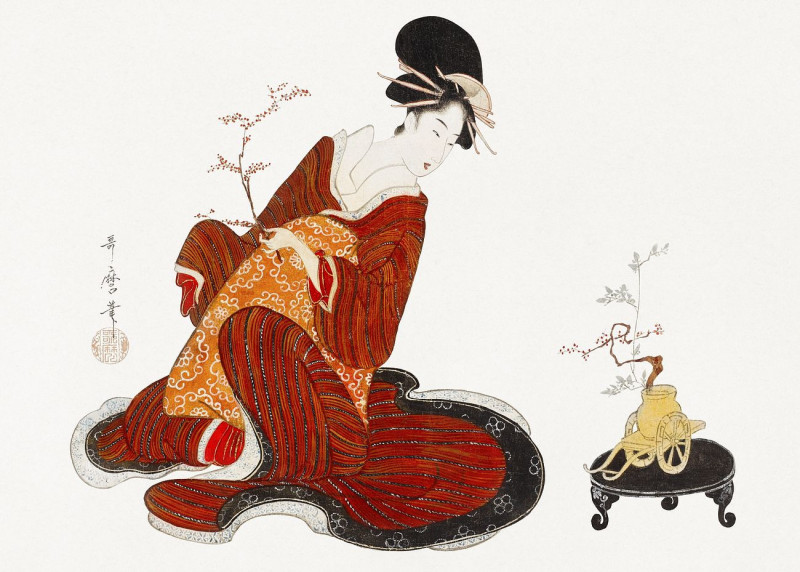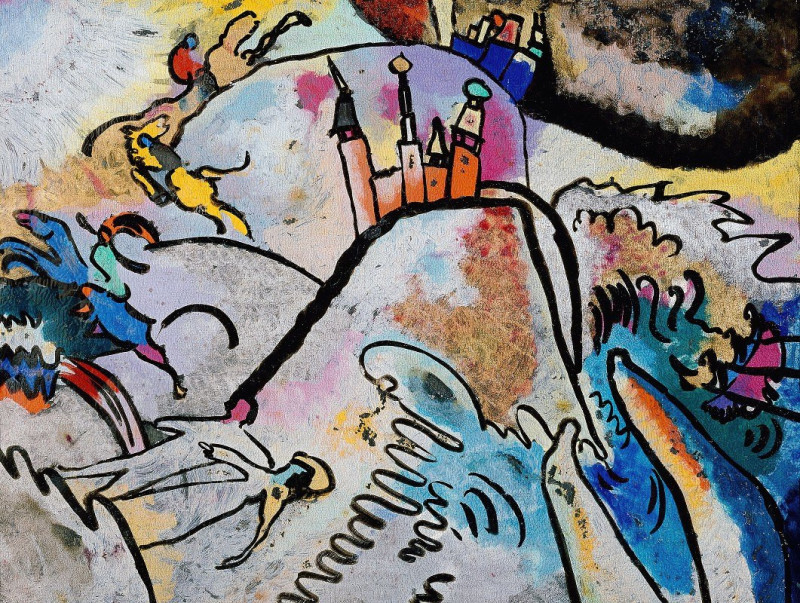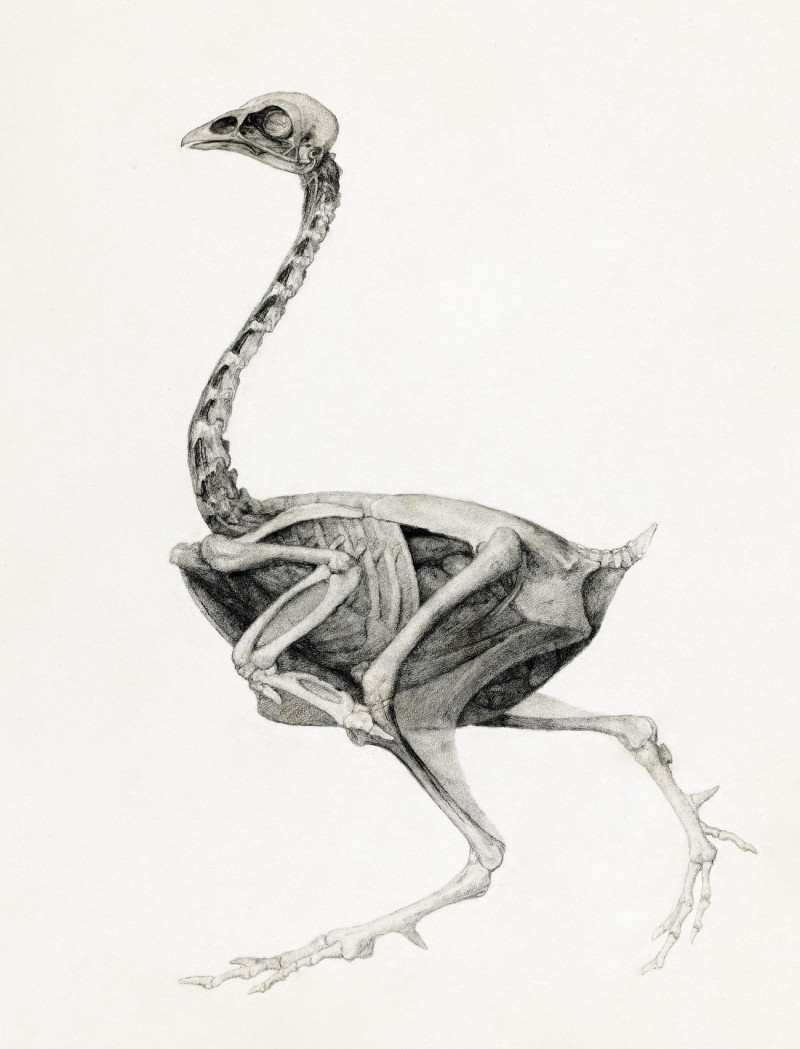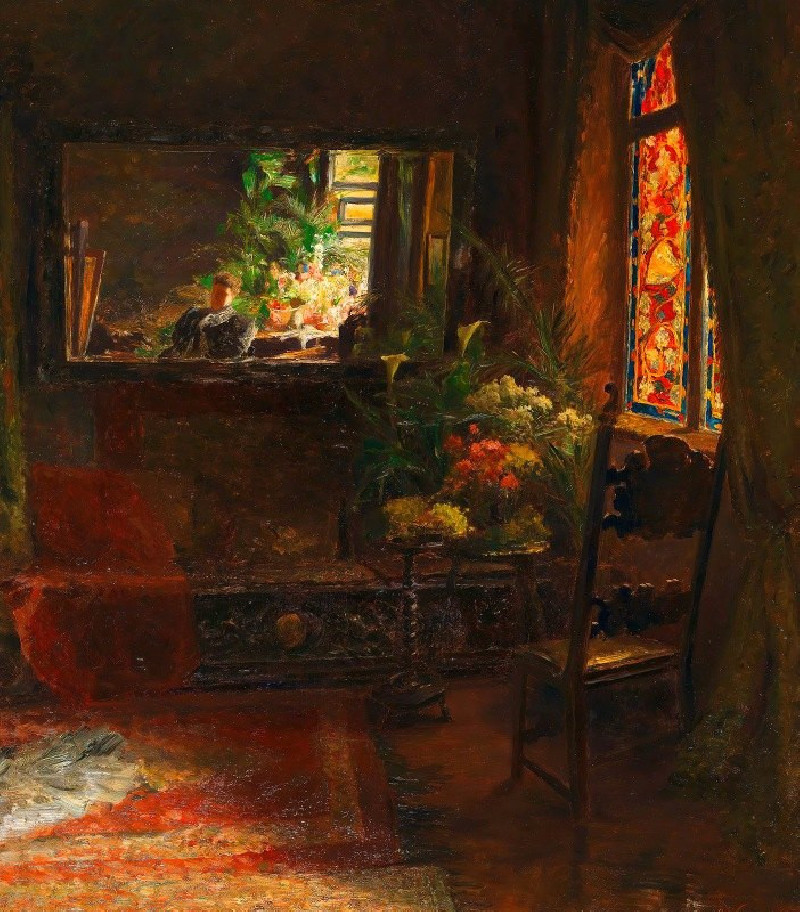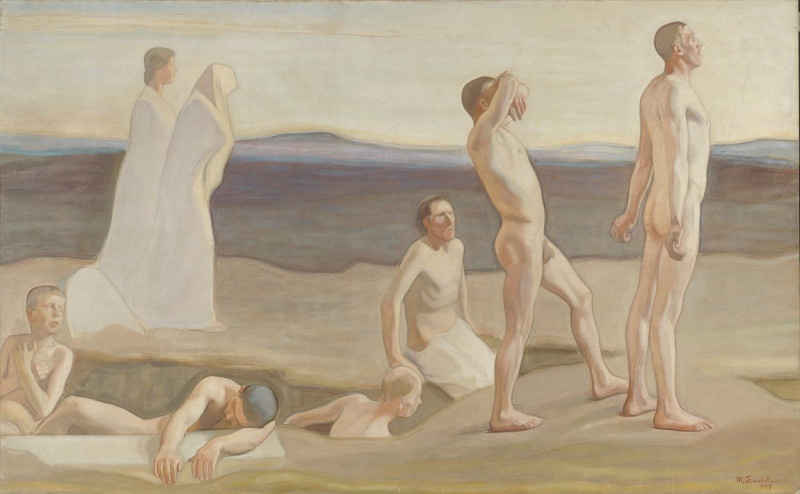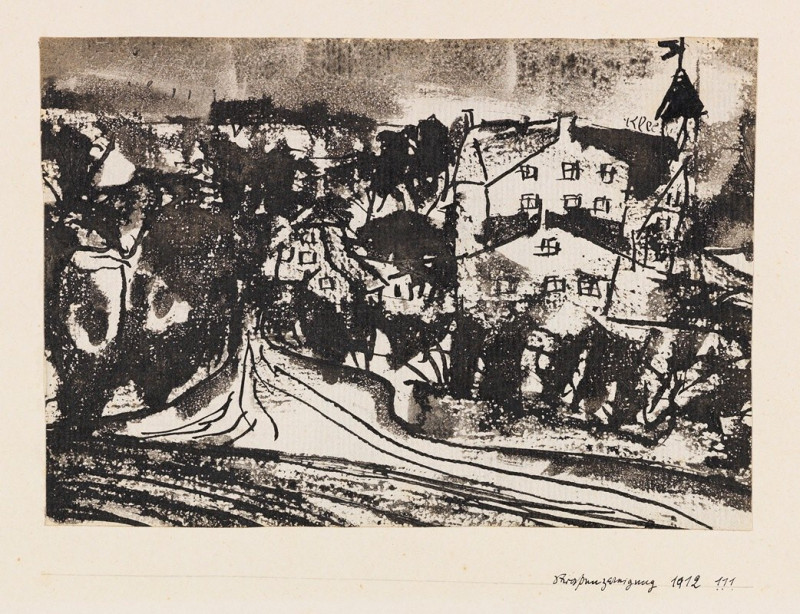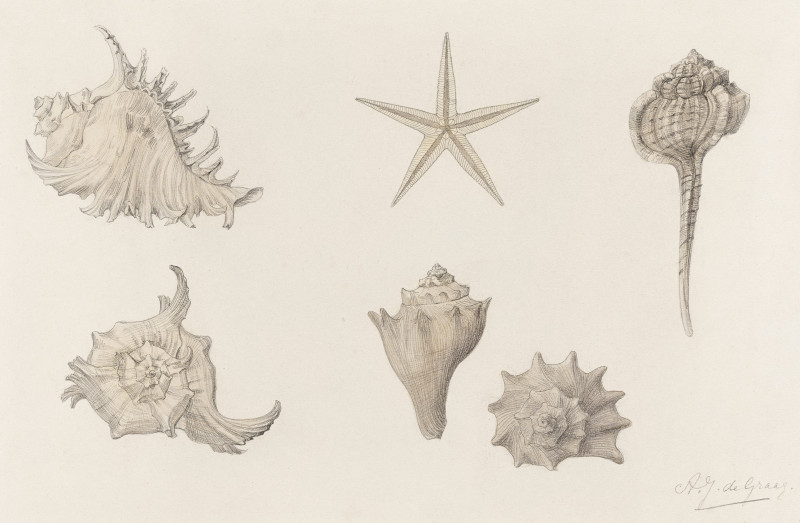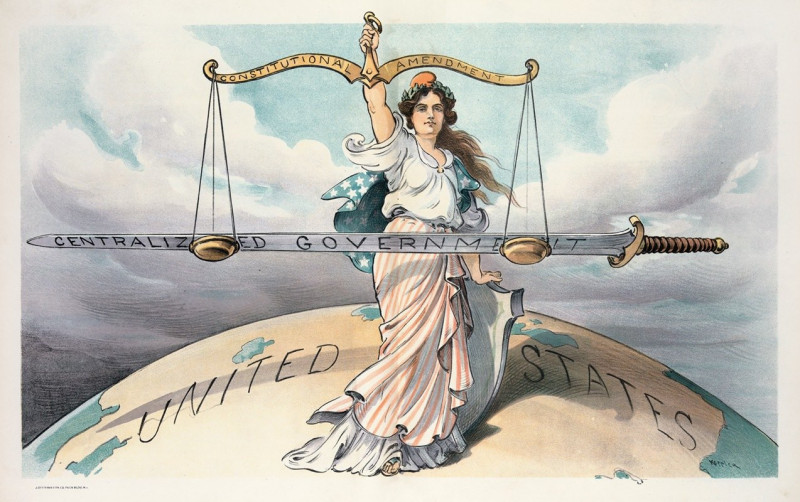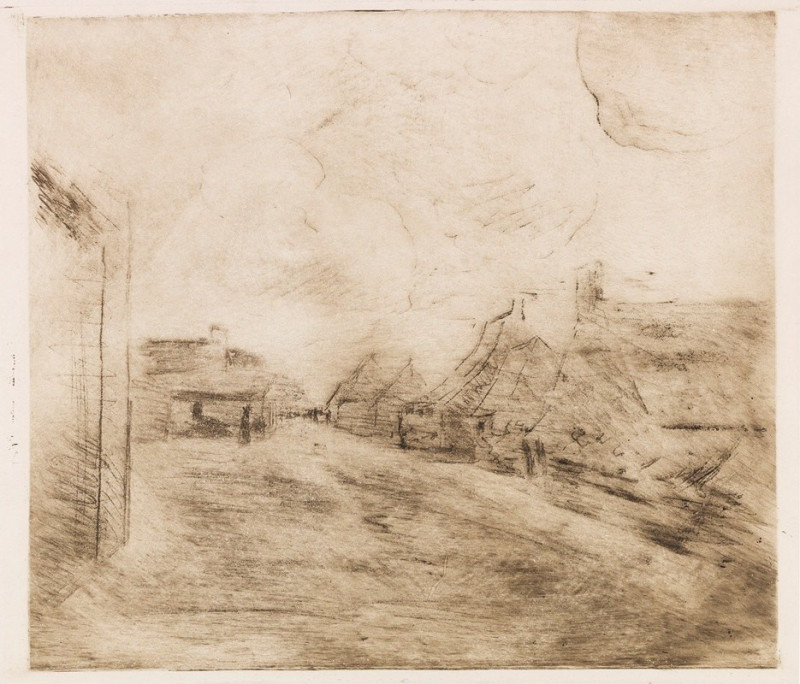Camouflaged Field in France (1918)
Technique: Giclée quality print
Recommended by our customers
More about this artwork
Welcome to our website's feature on one of John Singer Sargent's lesser-known but profoundly impactful works, "Camouflaged Field in France," painted in 1918. This watercolor work captures a vivid and emotional scene from the landscapes altered by World War I.In this painting, Sargent illustrates a panoramic view of a battlefield, but rather than focusing on the turmoil of war, he highlights the art of camouflage—a key tactic in military defense during the war. The central subject of the artwork is a large, camouflaged structure draped in cloths that blend with the earthy tones of the surrounding landscape. This structure stretches across the middle of the composition, creating a harmonious integration with nature. The artist's mastery in watercolor is evident in the fluidity and variety of strokes used to represent the grasses and fields, which are depicted in golden and brown hues, suggesting the rugged beauty of the war-torn French countryside.Sargent's use of light and shadow, combined with a diverse palette of earth tones, conveys not just the visual deception required in warfare, but also the surreal and sometimes strangely beautiful adaptations made in times of conflict. The sky, a mix of grays and blues interspersed with patches of white, brings a dynamic contrast to the scene, symbolizing the ongoing tension between calm and chaos."Camouflaged Field in France" not only provides an insight into the tactical elements of war but also serves as a poignant reminder of the landscapes that silently witness human history's most defining moments. Captured during Sargent's time as a war artist, this painting stands as a testament to his ability to document and interpret the emotional and physical landscapes of war with sensitivity and depth.
Delivery
Returns
Born in Florence to American expatriate parents, John Singer Sargent (1856–1925) is considered Europe's leading portrait painter of the Edwardian era. He was educated at both Accademia delle Belle Arti and Paris's École des Beaux Arts. While in Paris, under the guidance of Émile–Auguste Carolus–Duran, a portraitist and muralist, Sargent learned to paint directly from observation without first sketching, employing a fluidity, influenced by the Impressionists. Sargent created more than 2,900 paintings, mainly portraits and landscapes from his travels across the Atlantic, Europe, the Middle East and America.


